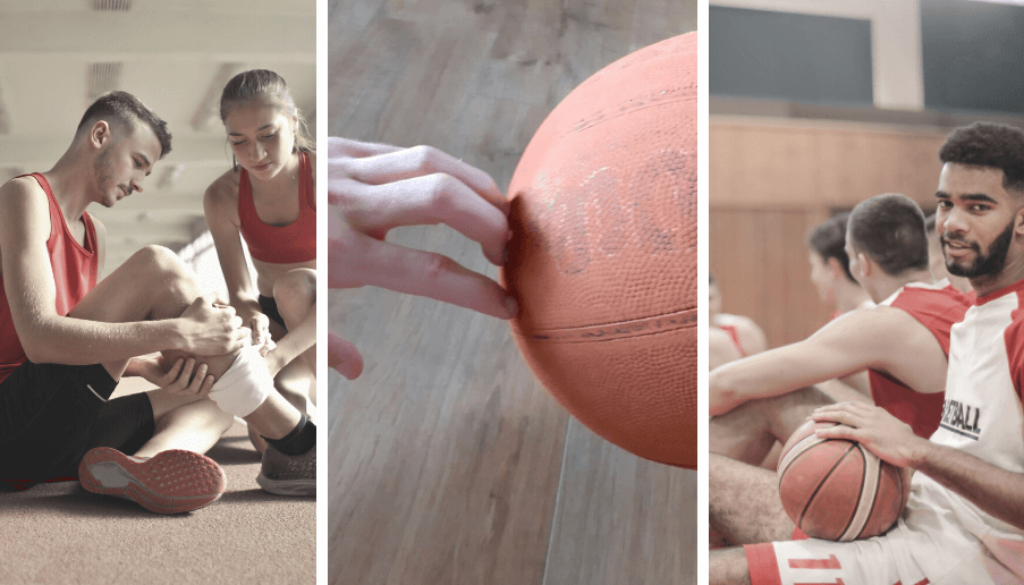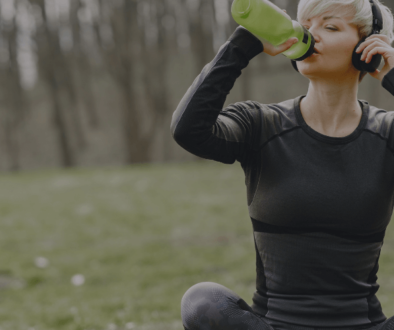Jammed Fingers: The Basketballers Guide
A bit like ankle sprains, most ballers will know the pain of having the ball slam into the tip of your finger. For me, the thumb is always the worst. It is probably not surprising that this is one of the most common injuries (4th most common) but it is difficult to avoid. You can’t prevent someone from tipping the ball and changing its path into your hand.
Although this often causes significant pain at the time, the good news is it is often short living. Recovery times are quick and treatment normally limited to just letting it settle. Ice and taping to an adjacent finger (buddy taping) can help in some instances.
Interestingly, only around 10% of basketball injuries happen to the wrist, hand and forearm. Surprising, considering the game is predominantly played with the hands and involves catching, dribbling, and passing, shooting and stealing the ball.
Symptoms of a Jammed Finger
The symptoms of a jammed finger are the same as a sprain and can vary depending on the severity of the injury. They may include:
- Pain
- Tenderness to touch
- Swelling
- Bruising
- Decreased range of motion
Risk Factors for Jammed Fingers
Unfortunately, when it comes to basketball, there is always a risk of jamming your finger. You can’t prevent someone from tipping the ball and changing its path into your hand. In addition, the following factors could increase your risk:
- Prior finger injury: you are more likely to sprain your ligaments again if you return to training too quickly or you skip rehabbing the finger. Because it is often seen as a minor injury, rehab is often skipped.
- Poor conditioning: poor strength and/or mobility in the fingers may increase the risk of a sprain.
- Fatigue: you are more likely to make poorer decisions in the last quarter due to fatigue. Fatigue is actually a risk factor in most injuries.
Whilst being strong and mobile at the wrist and fingers will help, it often comes down to awareness and reaction skills too. Jamming your finger often happens because of poor timing or taking your eye off the ball. The better your reactions the less likely it is to happen. The more aware you are of your surroundings, the less likely you are to jam your finger on an opponent. Fatigue is often the biggest factor in poor timing/decisions late in games.
Good nutrition and sleep are key to the body functioning properly but are often missed when it comes to minimising the risk of injuries. Making sure you eat well, stay hydrated, refuel after games/training, and get good rest minimises the risk of injuries.

Treating a Jammed Finger
Treatment for a jammed finger can vary dependent on the severity of your injury. The first focus is to promote healing of the ligament(s) and tissues. Then the focus can be to restore the function of the finger before sports specific rehab. The final steps are a graded return to play programme.
Initial management
- Use an ice pack or ice slush bath for 15 to 20 minutes and repeat every two to three hours while you’re awake. Remember to check the skin regularly to make sure you don’t give yourself a freezer burn. If you have vascular disease, diabetes or decreased sensation, talk with your doctor before applying ice.
- Optimise load: For a short period of time, reduce or modify the activity to allow pain to settle. Complete rest should be minimised and find the balance between rest and movement. Sometimes buddy taping is needed to allow this
- If needed, take pain relief medication. Over the counter medication is usually sufficient. Speak to a pharmacist or GP about medication if you are uncertain of what you can take. Just remember that the body needs inflammation to help your tissues heal, taking anti-inflammatories such as ibuprofen in the first 48-72hrs may slow down recovery times.
- Consider your nutrition for recovery
- Make sure you get a good night’s sleep
Rehab
Once any swelling and pain have lessened enough to resume movement, rehab consists of a series of exercises to restore your fingers range of motion and strength. Exercises will need to be progressed to ensure you continue to improve. The level of exercise is usually based on pain tolerance levels, this can vary from person to person.
Exercises may involve various gripping and extension exercises, such as ball squeezes, towel rings, extension with bands and weight plate pinches. It is important for the finger(s) to be strong in all ranges of movement so it can tolerate load again.
Return to Sport following a Jammed Finger
Once you are able to tolerate normal movements and loads. It is important to do basketball-specific drills as part of rehab. Dribbling, passing and shooting are all key here. Building this up gradually is essential, those that return too soon or try rushing rehab often go backwards and it takes longer.
If you are unsure how to rehab properly, speak with a performance coach or therapist. They can help with training loads and put a suitable plan together to reduce the risk of reoccurrence.
Final Notes
If the finger doesn’t move easily, there is a deformity or the pain gets worse, get your finger checked out and have an X-ray to determine if there is a bone fracture or dislocation. After the swelling decreases and the pain subsides, try to move the finger very slightly. If the injury is mild, you will be able to move the finger with little discomfort over a short time.
Remember, these resources should not replace diagnosis and management from a medical professional. Always check before you follow the guidance.




